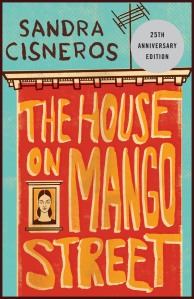The landscape of time can be a ticklish beast, particularly when writing. We live our lives in a linear fashion, always moving forward, never backwards or sideways. Our characters often live their lives linearly as well. In fact, books themselves must be read in a front to back fashion where chapter one leads to chapter two and so on. Yet time – or story time – is more malleable in a novel than it is in real life. Engaging a reader in the whole history of a world and character requires flashbacks, summarization of memories, and whole scenes that make us time travelers. Or as my favorite time traveler Doctor Who would say:
As authors, the question is how do we deal with all this wibbly-wobbly timey-wimey stuff without disorienting our reader? Jumping around in time is a luxury we can explore, but walking blindly into a flashback, without any cues to the reader, will break the fictive dream and draw attention to itself. It will commit the cardinal sin of writing, which is to remind the reader that they are reading.
One of the best ways to transition a reader in time is through the careful crafting of language. Words are our tools and used craftily, that can lull a reader through an invisible portal from one time space to another.
Let’s look at four techniques to help a reader flawlessly transition through story time.
Create transitions through the repetition of sounds, syllables, objects, and words. In the excerpt from The House on Mango Street below, the repetition of the words know and because are used as a portal from one time period to the next. The words move us from the present day story space to a new location in Mexico, and then back again.
“I have never seen my Papa cry and I don’t know what to do. I know he will have to go away, that he will take a plane to Mexico, all the uncles and aunts will be there, and they will have a black-and-white photo take in front of the tomb … because this is how they send the dead away in that country. Because I am the oldest, my father has told me first and now it is my turn to tell the others.”
2) Sentence and Phrase Repetition
Create transitions through the repetition of phrases, images, and sentence structure.
In this second example from The House on Mango Street, the repetition of a sentence structure creates a rhythm and punctuation to the paragraph. It is the repeating words along with the repeating rhythm that transitions the reader from impression to impression.
“In English my name means hope. In Spanish it means too many letters. It means sadness, it means waiting. It is like the number nine … It is the Mexican records my father plays on Sunday mornings … songs like sobbing. It was my great-grandmother’s name and now it is mine.” (The House on Mango Street)
3) Word Association
Remember being a kid and playing the word association game? The mind likes to make connections through visual images evoked by single words. You can also use this technique to create transitions in time and space.
The word association game begins with hair in the example below. It then riffs off of imagery to transition from hair to bread, thus moving the reader into a memory.
“But my mother’s hair, my mother’s hair, like little rosettes, like little candy circles all curly … sweet to put your nose into when she is holding you… is the warm smell of bread before you bake it, is the smell when she makes room for you on her side of the bed … the rain outside falling and Papa snoring.” (The House on Mango Street)
4) Question and Answer
You can also use a question to transition the reader from one time to the next. The question creates curiosity in the reader’s mind and the answer works as a transition into the new time space.
“No address. No Name. Nothing in his pockets. Ain’t it a shame. Only Marin can’t explain why it mattered … but what difference does it make? He wasn’t anything to her. He wasn’t her boyfriend … Just another brazer who didn’t speak English. Just another wetback … How does she explain it? She met him at a dance. Geraldo in his shiny shirt and green pants…” (The House on Mango Street)
There are a lot ways to transition between time and space in a story. In later posts we can discuss things like: cause and effect, causality link-chains, or pause button violations. For now, focus on the magic of phrasing and how your words can makes a transition seem inevitable, natural, and invisible.
See these time transition techniques (and more) in practice by reading and studying these awesome stories:
- How to Tell a True War Story by Tim O’Brien
- The House on Mango Street by Sanda Cicneros
- Small Damages by Beth Kephart
Tags: Linearity and time in novels, Time Travel in Novels, Transitions in time, Transitions to backstory, Transitions to exposition


Thanks – those stories do sound awesome. Great tricks to keep the reader in the story world.
Great post, Ingrid. I just did a free write using your word association example. I think I’ve figured out how to weave in some key backstory I’ve been struggling with. Thanks!
Thanks for this. I’m working with transitions right now and these are great techniques.
Also, I love how you used one of my favourite Dr. Who quotes. I used it a few months ago when I discussed writing out of time, in different sequences. It is interesting how this one concept can be adapted to various ideas.
Wow that was unusual. I just wrote an extremely long
comment but after I clicked submit my comment didn’t show up.
Grrrr… well I’m not writing all that over again.
Regardless, just wanted to say excellent blog!